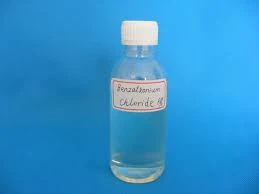Understanding the Composition and Uses of Poly Aluminium Chloride in Various Industries
Understanding Poly Aluminium Chloride A Comprehensive Overview
Poly Aluminium Chloride (PAC) is a widely used chemical compound that has gained popularity in various industrial applications. It serves as an effective coagulant and flocculant in the water treatment process, making it a critical agent for both drinking water purification and wastewater treatment. This article explores the composition, production, and usage of poly aluminium chloride, as well as its benefits and potential drawbacks.
Composition and Properties
Poly Aluminium Chloride is a polymeric form of aluminum chloride, which is a chemical compound made from aluminum and chlorine. It appears as a white or yellowish powder and is highly soluble in water. The main components of PAC are aluminum ions and hydroxyl ions, forming a complex structure that allows it to be effective at lower doses compared to traditional aluminum-based coagulants.
One notable characteristic of PAC is its variable basicity, which refers to the ratio of hydroxyl ions to aluminum ions. The basicity can range from 40% to 90%, influencing its coagulation and flocculation properties. Higher basicity PACs are often more effective at neutralizing charges in colloidal suspensions.
Production
The production of PAC involves the reaction of aluminum hydroxide with hydrochloric acid, resulting in a highly soluble product. Various manufacturing processes allow for the control of polymerization, which impacts the performance of the final product. The preparation steps include
1. Dissolving aluminum hydroxide in hydrochloric acid. 2. Controlling temperature and concentration to facilitate polymerization. 3. Adjusting the pH to achieve the desired basicity level.
The controlled manufacturing process ensures consistency in quality and performance, making PAC a reliable choice for many applications.
Applications
Poly Aluminium Chloride is renowned for its versatility across different sectors
what is poly aluminium chloride

1. Water Treatment PAC is predominantly used in municipal water treatment plants. Its effectiveness in coagulating impurities helps in settling suspended solids, thus improving water clarity. By neutralizing the negative charges on colloidal particles, PAC enhances the formation of larger aggregates (flocs), which can be easily removed.
2. Wastewater Treatment In industrial settings, PAC is instrumental in treating wastewater, where it aids in removing organic and inorganic contaminants. Its use not only improves effluent quality but also reduces the amount of sludge generated, making it an environmentally friendly option.
3. Paper Industry The pulp and paper industry utilizes PAC as a retention agent to improve the retention of fillers and fines, thus enhancing paper quality and reducing waste.
4. Food Processing PAC is also used in the food industry, particularly for the purification of drinking water and in the processing of food products.
Benefits of PAC
The adoption of Poly Aluminium Chloride brings several advantages
- Cost-Effectiveness PAC typically requires lower dosages than traditional coagulants like aluminum sulfate, resulting in cost savings on both chemicals and subsequent waste management. - Enhanced Performance Its ability to function effectively at varying pH levels makes PAC suitable for diverse water conditions and types. - Reduced Sludge Production PAC generates less sludge than other coagulants, which means less waste management and disposal burden for treatment facilities.
Challenges and Considerations
Despite its many benefits, the use of PAC is not without challenges. It can lead to the release of aluminum into water systems, sparking concerns over its potential health effects. Regulatory agencies are closely monitoring aluminum levels to ensure they remain within safe limits. Furthermore, the operational practices at treatment facilities must be managed carefully to prevent overdosing, as high levels of coagulants can adversely affect water quality.
Conclusion
Poly Aluminium Chloride plays a vital role in modern water treatment and industrial processes, offering an effective solution for coagulation and flocculation. Its unique properties, production methods, and environmental advantages make it a preferred choice across many sectors. However, responsible usage and strict monitoring are essential to mitigate any potential health risks associated with aluminum exposure. As industries continue to prioritise sustainability and efficiency, PAC will undoubtedly remain an integral component of water treatment protocols worldwide.
-
2-Phosphonobutane-1,2,4-Tricarboxylic Acid: Scale & CorrosionNewsAug.29,2025
-
Premium Isothiazolinones | Broad-Spectrum Biocidal SolutionsNewsAug.28,2025
-
LK-319 Special Scale And Corrosion Inhibitor For Steel Plants: Advanced Solutions for Industrial Water SystemsNewsAug.22,2025
-
Flocculant Water Treatment: Essential Chemical Solutions for Purification ProcessesNewsAug.22,2025
-
Isothiazolinones: Versatile Microbial Control Agents for Industrial and Consumer ApplicationsNewsAug.22,2025
-
Scale Inhibitor: Key Solutions for Water System Scale PreventionNewsAug.22,2025





